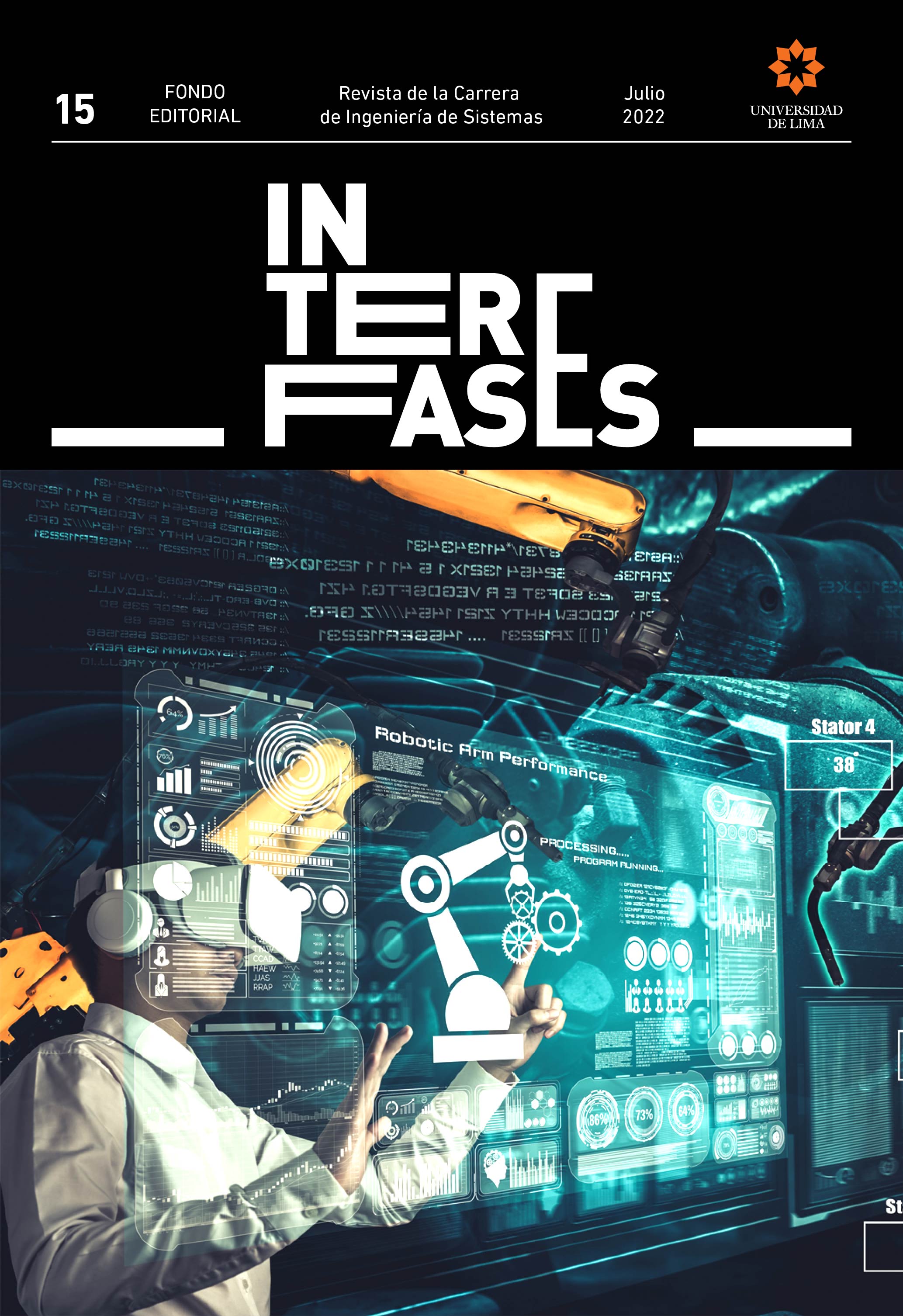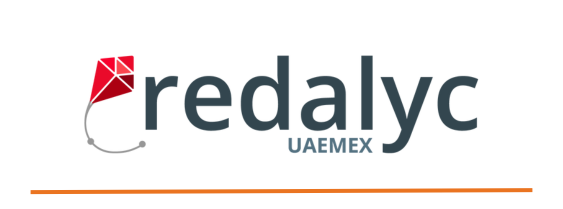Aplicación de Machine Learning en la Gestión de Riesgo de Crédito Financiero: Una revisión sistemática
DOI:
https://doi.org/10.26439/interfases2022.n015.5898Palabras clave:
machine learning, ML, gestión, riesgo, crédito, algoritmoResumen
La gestión de riesgos bancarios puede ser dividida en las siguientes tipologías: riesgo crediticio, riesgo de mercado, riesgo operativo y riesgo de liquidez, siendo el primero el tipo de riesgo más importante para el sector financiero. El presente artículo tiene como objetivo mostrar las ventajas y desventajas de la implementación de los algoritmos de machine learning en la gestión de riesgos de crédito y, a partir de esto, mostrar cuál tiene mejor rendimiento, señalando también las desventajas que puedan presentar. Para ello se realizó una revisión sistemática de la literatura con la estrategia de búsqueda PICo y se seleccionaron doce artículos. Los resultados reflejan que el riesgo de crédito es el de mayor relevancia. Además, algunos de los algoritmos de machine learning ya han comenzado a implementarse, sin embargo, algunos presentan desventajas resaltantes como el no poder explicar el funcionamiento del modelo y ser considerados como caja negra. En ese sentido, desfavorece la implementación debido a que los organismos regulatorios exigen que un modelo deba ser explicable, interpretable y transparente. Frente a ello, se ha optado por realizar modelos híbridos con algoritmos que no son sencillos de explicar, como aquellos modelos tradicionales de regresión logística. También, se presenta como alternativa utilizar métodos como SHAPley Additive exPlanations (SHAP) que ayudan a la interpretación de dichos modelos.
Descargas
Referencias
Babenko, V., Panchyshyn, A., Zomchak, L., Nehrey, M., Artym-Drohomyretska, Z., & Lahotskyi, T. (2021). Classical machine learning methods in economics research: Macro and micro level examples. WSEAS Transactions on Business and Economics, 18, 209-2017. https://doi.org/10.37394/23207.2021.18.22
Bank for International Settlements. (2005). An explanatory note on the Basel II IRB Risk Weight Functions. Basel Committee on Banking Supervision. https://www.bis.org/bcbs/irbriskweight.htm
BBVA Corporation. (2019, 6 de febrero). Forbes destaca los usos que BBVA hace de la inteligencia artificial. BBVA. https://www.bbva.com/es/forbes-destaca-los-usos-que-bbva-hace-de-la-inteligencia-artificial/
Bhatore, S., Mohan, L., & Reddy, R. (2020). Machine learning techniques for credit risk evaluation: a systematic literature review. Journal of Banking and Financial Technology, 4, 111-138. https://doi.org/10.1007/s42786-020-00020-3
Bussmann, N., Giudici, P., Marinelli, D., & Papenbrock, J. (2020). Explainable AI in fintech risk management. Frontiers in Artificial Intelligence, 1-5. https://doi.org/10.3389/frai.2020.00026
Bussmann, N., Giudici, P., Marinelli, D., & Papenbrock, J. (2021). Explainable machine learning in credit risk management. Computational Economics, 57(1), 203-216. https://doi.org/10.1007/s10614-020-10042-0
Castelvecchi, D. (2016). Can we open the black box of AI? Nature, 538, 20-23. https://doi.org/10.1038/538020a
Columbus, L. (2021, 17 de enero). 76% of enterprises prioritize AI & machine learning in 2021 IT budgets. Forbes. https://www.forbes.com/sites/louiscolumbus/2021/01/17/76-of-enterprises-prioritize-ai--machine-learning-in 2021-it-budgets/?sh=6f9c20c618a3
Cui, H. (2021). Research on Credit Risk Control of Commercial Banks Based on Data Mining Technology. 2021 International Conference on Computer, Blockchain and Financial Development, (pp. 383-386). https://doi.org/10.1109/CBFD52659.2021.00083
Cunningham, P., Cord, M., & Delany, S. J. (2008). Supervised learning. En M. Cord y P. Cunningham (Eds.), Machine learning techniques for multimedia. Cognitive technologies (pp. 21-49). https://doi.org/10.1007/978-3-540-75171-7_2
Dietterich, T. (1997). Machine-learning research. AI Magazine, 18(4), 97-136. https://doi.org/10.1609/aimag.v18i4.1324
Dumitrescu, E., Hué, S., Hurlin, C., & Tokpavi, S. (2021). Machine learning for credit scoring: Improving logistic regression with non-linear decision-tree effects. European Journal of Operational Research, 297(3), 1178-1192. https://doi.org/10.1016/j.ejor.2021.06.053
Elizondo, A. (2003). Medición integral del riesgo de crédito. Limusa.
Enterprise.nxt Staff. (2021, 19 de agosto). The rise of artificial intelligence and machine learning. Hewlett Packard Enterprise. https://www.hpe.com/us/en/insights/articles/the-rise-of-artificial-intelligence-and-machine-learning-2108.html
Fritz-Morgenthal, S., Hein, B., & Papenbrock, J. (2022). Financial risk management and explainable, trustworthy, responsible AI. Frontiers in Artificial Intelligence, 5, 1-14. https://doi.org/10.3389/frai.2022.779799
Ghahramani, Z. (2004). Unsupervised learning. En O. Bousquet, U. von Luxburg, y G. Rätsch (Eds.), Advanced lectures on machine learning. Lecture Notes in Computer Science (vol. 3176, pp. 72-112). Springer. https://doi.org/10.1007/978-3-540-28650-9_5
Giacometti, R., Torri, G., Farina, G., & De Giuli, M. (2020). Risk attribution and interconnectedness in the EU via CDS data. Computational Management Science, 17, 549-567. https://doi.org/10.1007/s10287-020-00385-2
Hui Hoo, Z., Candlish, J., & Teare, D. (2017). What is an ROC curve? Emergency Medicine Journal, 34, 357-359. http://dx.doi.org/10.1136/emermed-2017-206735
IBM. (2018, 26 de diciembre). ¿Qué es machine learning? https://www.ibm.com/pe-es/analytics/machine-learning
KPMG Company. (2021, mayo). With asset quality on the brink, supervisors’ focus on credit risk is growing. https://home.kpmg/xx/en/home/insights/2021/05/with-asset-quality-on-the-brink-supervisors-focus-on-credit-risk-is-growing.html
Leo, M., Sharma, S., & Maddulety, K. (2020). Machine learning in banking risk management: A literature review. Risks, 7(1), 1-22. https://doi.org/10.3390/risks7010029
Mashrur, A., Luo, W., Zaidi, N., & Robles-Kelly, A. (2020). Machine learning for financial risk management: A survey. IEEE Access, 8, 203203-203223. https://doi.org/10.1109/ACCESS.2020.3036322
Milojević, N., & Redzepagic, S. (2021). Prospects of artificial intelligence and machine learning application in banking risk management. Journal of Central Banking Theory and Practice, 10(3), 41-57. https://doi.org/10.2478/jcbtp-2021-0023
Moreno, A., Armengol, E., Béjar, J., Belanche, L., Cortés, U., Gavaldà, R., Gimeno, J. M., López, B., Martín, M. & Sánchez, M. (1994). Aprendizaje automático. Edicions UPC.
Nina, H., Pow-Sang, J. A., & Villavicencio, M. (2021). Systematic mapping of the literature on secure software development. IEEE Access, 9, 36852-36867. https://doi.org/10.1109/ACCESS.2021.3062388
Plawiak, P., Abdar, M., Plawiak, J., Makarenkov, V., & Acharya, U. (2020). DGHNL: A new deep genetic hierarchical network of learners for prediction of credit scoring. Information Sciences, 516, 401-418. https://doi.org/10.1016/j.ins.2019.12.045
SAS: Analytics, Artificial Intelligence and Data Management. (2017). Machine learning and artificial intelligence in a brave new world. https://www.sas.com/en_au/insights/articles/analytics/machine-learning-and-artificial-intelligence-in-a-brave-new-world.html
SAS: Analytics, Artificial Intelligence and Data Management. (2015). Credit risk management - What it is and why it matters. Risk Insights. https://www.sas.com/el_gr/insights/risk-management/credit-risk-management.html
Srinivasa Rao, M., Sekhar, C., & Bhattacharyya, D. (2021). Comparative Analysis of Machine Learning Models on Loan Risk Analysis. Advances in Intelligent Systems and Computing, 1280, 81–90. https://doi.org/10.1007/978-981-15-9516-5_7
Superintendencia de Banca, Seguros y AFP. (s. f.). Métodos basados en calificaciones internas. https://www.sbs.gob.pe/Portals/0/jer/pres_doc_basilea/III%20METODO%20IRB.pdf
Teng, H.-W., & Lee, M. (2020). Estimation procedures of using five alternative machine learning methods for predicting credit card default. En C. Lee, & J. Lee, Handbook of financial econometrics, mathematics, statistics, and machine learning (vol. 4, pp. 3545-3572). https://doi.org/10.1142/9789811202391_0101
Visa, S., Ramsay, B., Ralescu, A., & van der Knaap, E. (2011). Confusion matrix-based feature selection. Proceedings of the 22nd Midwest Artificial Intelligence and Cognitive Science Conference 2011, 120-127.
Zhang, X. D. (2020). A matrix algebra approach to artificial intelligence. Springer.
Zhang, Y., (Ed.). (2010). New Advances in Machine Learning. IntechOpen. https://doi.org/10.5772/225
Publicado
Número
Sección
Licencia
Los autores/as que publiquen en esta revista aceptan las siguientes condiciones:
Los autores/as conservan los derechos de autor y ceden a la revista el derecho de la primera publicación, con el trabajo registrado con la licencia de atribución de Creative Commons, que permite a terceros utilizar lo publicado siempre que mencionen la autoría del trabajo y a la primera publicación en esta revista.
Los autores/as pueden realizar otros acuerdos contractuales independientes y adicionales para la distribución no exclusiva de la versión del artículo publicado en esta revista (p. ej., incluirlo en un repositorio institucional o publicarlo en un libro) siempre que indiquen claramente que el trabajo se publicó por primera vez en esta revista.
Se permite y recomienda a los autores/as a publicar su trabajo en Internet (por ejemplo en páginas institucionales o personales) antes y durante el proceso de revisión y publicación, ya que puede conducir a intercambios productivos y a una mayor y más rápida difusión del trabajo publicado (vea The Effect of Open Access).
Última actualización: 03/05/21






